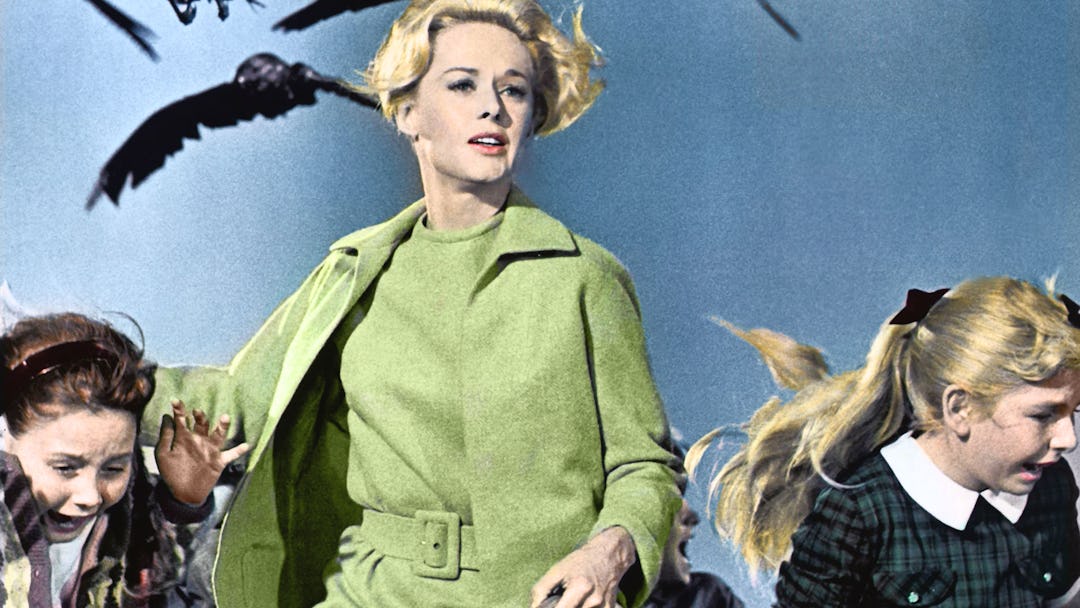The headline was like chum for a shark, or in this case easily outraged classic film fans: “Why The Shallows is better than The Birds.” A provocative title, to say the least – one the reader would expect the article to argue forcefully. But that would suggest the writer was interested in making a case, or doing anything besides basking in the warm glow of his enlightened worldview. Instead, the Guardian’s hate-read of the week takes for granted that The Shallows is better than The Birds because The Shallows is new and The Birds is old, and furthermore Alfred Hitchcock had issues with women (which he certainly did), and therefore it is our duty to consign the films he made to the compost heap. And with that article, criticism got a little dumber, coarser, and more blinkered.
Arguing online that art is not a zero sum game, one that requires the total annihilation of what came before, is akin to spitting into the wind — but that doesn’t make it any less true. Liking something new does not mean having to disparage something old, and neither does the critic or consumer have to look at something new as a replacement for something old, as though they were swapping out toasters. Art, and the people who consume it, draw on what came before. Context and history make for stronger, better art. A closer analog to The Shallows is the excellent 1978 Australian film Long Weekend, which also deals with vacationers on an isolated beach, trapped by wildlife bent on destroying them. No-one needs a no holds barred match-up between Long Weekend and The Shallows, either — but knowing where the art we consume comes from can deepen our appreciation for that art, and also widen the frames of reference for what we take in. If a viewer liked The Shallows, they should check out Long Weekend; if they liked Long Weekend, they should try Wake in Fright. Or if they’re more interested in animal attack films, Jaws is the most obvious precursor, and then films as varied as Cujo, Razorback, Day of the Animals, and, well, Alfred Hitchcock’s The Birds.
Older films certainly reflect the times and people who made them, and can thus include some undeniably ugly attitudes. Yet this is where some self-awareness is necessary in processing art. Fifty years from now, we will look like barbarians to the new generation. There has been no group of humans in history that did not consider themselves better than those who came before. But it’s futile to ask art created in another era to submit to a pass/fail test of meeting society’s current values. We don’t have to accept the art in question uncritically, but we do have to remember that it reflects the era of its creation. For example, snickering at things like miniatures and rear projection in older movies is asking for trouble; 2016’s shiniest, newest tricks will look hopelessly creaky in the future too. Condemning a film’s values as being “problematic” is the moral/ethical equivalent of this; it’s imposing modern standards onto a time when such standards didn’t exist.
Approaching art with an open mind leads to the understanding the art that survives is the art that still has something to say. The viewer who lets art blast holes in their preconceptions and solidified beliefs is the viewer who is taken new places. So stretch comfort zones. Watch black-and-white films. See the luminous images of 1932’s The Island of Lost Souls shimmer in the ’30s Paramount house style, or marvel at the stark beauty of The Last Picture Show’s grainy black-and-white recalling the Depression-era photography of Dorothea Lange. Watch films with subtitles, like Jean Cocteau’s wondrous Beauty and the Beast or Wong Kar-Wai’s dreamy modern romance Chungking Express. Watch trash, like John Waters telling the ’80s to go to hell in Polyester, or the mad sexual delirium of Jess Franco’s films. Watch films by women, like Kathryn Bigelow presciently taking on police brutality and social media addiction in Strange Days, or Barbara Loden traveling the road to nowhere in Wanda.
And above all, relax! Life is terrifying, and it’s natural to wish for control, for the ability to force narratives to behave by conforming to previously agreed-upon edicts for what is good and what is bad. It’s an especially keen yearning now, with a xenophobic carnival barker dominating the news cycle and the sense that the center stopped holding when we weren’t looking. But art cannot be controlled. Let go of being the smartest person in the room when criticizing or consuming. Let go of having the insufferable certainty of the person who thinks they’re the first to learn that Jesus was not actually born on December 25. Because to continue to operate in that frame of mind is to not just end up wrong but smugly wrong.
At its core, art is a frightening loss of control, submitting to what it wants to show us and the questions it wants us to ask of it and ourselves. It can be humbling to admit how much we don’t know, how much we’ve yet to read, watch and listen to. But it can also be liberating. And in scary times when it feels like the world is falling apart, there is freedom and hope in storytelling. If nothing else, it’s a reminder that people before us were scared and overwhelmed too, and here is the art they made to deal with it. Maybe you’ll find what you need in it too.
